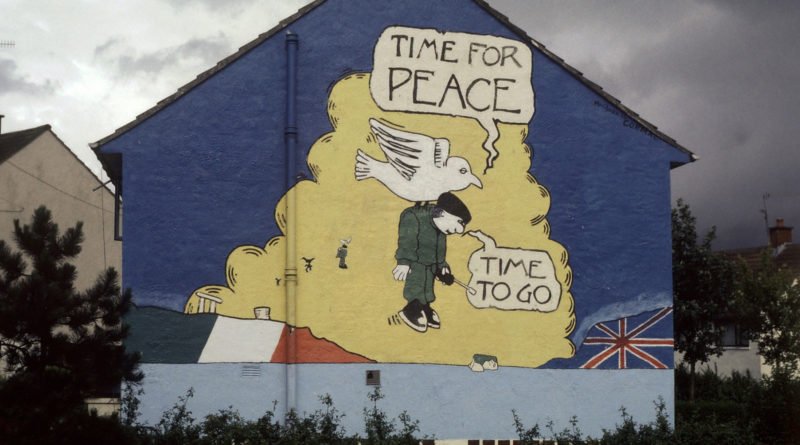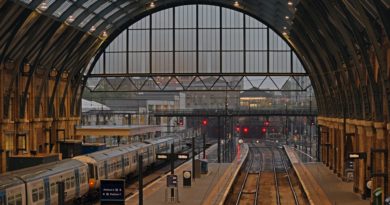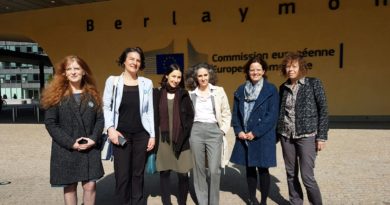The spectre of a hard border is not just an Irish problem, it looms across Europe
Katy Hayward, Queen’s University Belfast
The future of the border between the Republic of Ireland and Northern Ireland after Brexit is proving to be a complex political problem. As negotiators aim to avoid a new “hard border” between the two jurisdictions, their efforts will inevitably be shaped by a wider trend that has seen a tightening of border security around and within the European Union itself.
One option on the table during talks between British and Irish civil servants is to strengthen immigration controls at entry points to the mainland of Ireland. This idea was met with some consternation among Irish political and public commentators, many of whom object to the very principle of Ireland acting as a conduit for the UK’s border policy.
The proposed immigration controls at Irish entry points would centre upon the ability to distinguish between British and Irish citizens, other EU citizens and those from outside the European Economic Area. Such measures would seek to protect the special status of British and Irish citizens in these islands, while avoiding the imposition of constraints on the movement of people across the Irish border. But they immediately pose a potential sticking point for the EU, which would baulk at the idea of Ireland, an EU member-state, positively discriminating in favour of British citizens over other EU citizens.
An area of information sharing
Border controls already vary among the members of the Common Travel Area – Ireland, the UK and crown dependencies such as the Isle of Man – and across different types of borders be they land, sea, or air. Since the late 1990s, immigration officers in Irish ports have had the capacity to examine the identity documents of travellers from elsewhere in the Common Travel Area. This takes the form of fixed controls at air and sea ports and targeted controls along the Irish border. It is a tactic that means passengers are more conscious that they are being scrutinised, although their freedom of movement is not restricted.
In the mid-2000s, Ireland temporarily became a country of net immigration. The British government responded to this with a proposal to introduce checks between Northern Ireland and Great Britain in order to block a potential “backdoor for migrants” into the UK via the Irish part of the Common Travel Area. This proposal was defeated in 2009 by the House of Lords partly in a pique of unionist concern at the imposition of any border controls between two parts of the UK, as had been the case during and after World War II.
In the wake of this, by means of compromise, both governments agreed in 2011 on joint standards for entry and further exchange of information on individual travellers. The price for mutual recognition across the Common Travel Area of visas for visitors from certain countries, such as India, is increased scrutiny before they can enter the country. There has also been greater use of electronic border systems, including biometric sensors, when passengers arrive and depart. These arrangements mean that there is already far more monitoring of people’s travel (particularly air travel) between Britain and the island of Ireland than there is across the Irish border.
EU border controls tighten
In the meantime, greater scrutiny of passengers as they traverse state boundaries has become standard across Europe. The EU Commission has been taking steps recently to enhance monitoring of its internal and external borders. The assumption it shares here with the British government is that there is an integral connection between inward migration and internal insecurity. The response of both the EU and UK to this perceived threat is to enhance centralised powers of surveillance and increase restrictions on the immigration and internal movement of non-EU citizens.

Further measures for the “Security Union” confirmed by European Commission president Jean-Claude Juncker in his State of the Union speech in September 2016 include the speedy adoption and implementation of an EU entry-exit system to collect more data on travellers. The European Border and Coast Guard Agency (a strengthened version of the existing Frontex agency) is a core component of this border securitisation and came into being in early October 2016 with a reserve pool of 1,500 border guards and advanced technical support.
These developments not only affect external borders but allow the European Council to approve the imposition of temporary border controls between neighbouring member states in the interest of EU-wide security. This may happen if one state, facing what is deemed to be “severe migratory pressure”, fails to “co-operate adequately” with this new agency. These measures have been processed through the European Parliament and EU Council of Ministers at unprecedented speed.
Fortress Europe leaves no place for outsiders
During a speech at the LSE in September, the president of the European Parliament, Martin Schulz, claimed that he would not countenance a Europe in which “lorries and hedge funds are free to cross borders but citizens are not”. In so doing, he was not merely advocating the inseparability of the four freedoms – of goods, capital, services and people – within the EU but also reiterating the hierarchical distinction between EU citizens and immigrants. With such policies, the EU is coming to resemble a new citadel, increasingly fortified against the movement of people from beyond its walls.
Since partition of Ireland in 1921, enforcement policies along the Irish border have run the gambit from “extreme”, to hard, to soft. There is one sure lesson from the “borders of the past” in Ireland, of the type that the British prime minister Theresa May has said she wishes to avoid returning to, that the UK and EU must heed. Increasing military and security presence along state borders worsens the patterns of social and economic disintegration in border regions, deepens divisions and mistrust on both sides, and leaves wounds that are still exposed long after the checkpoints have been dismantled.
![]()
Katy Hayward, Senior Lecturer in Sociology, Queen’s University Belfast
This article was originally published on The Conversation. Read the original article.
Cover photo: Belfast mural, 2007. Photo courtesy Wikimedia Commons.




